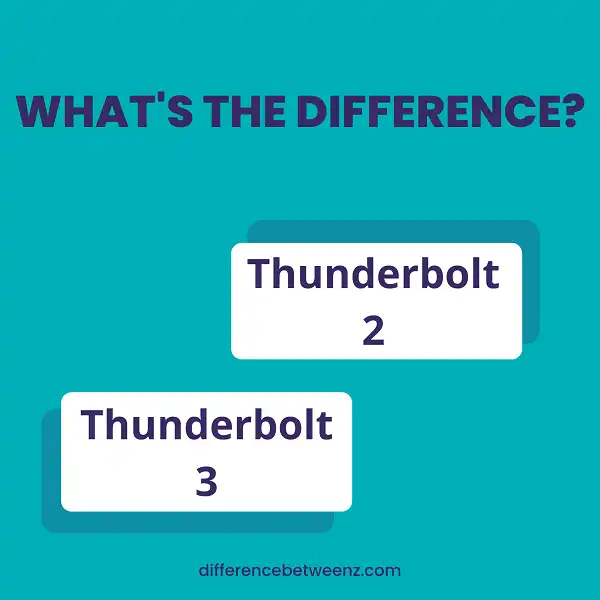Thunderbolt 2 and Thunderbolt 3 are both types of I/O technology that can be used to connect devices to a computer. But what’s the difference between the two? In this blog post, we’ll take a closer look at Thunderbolt 2 and Thunderbolt 3, and talk about which one might be right for you.
What is Thunderbolt 2?
Thunderbolt 2 is a high-speed interface that allows for the transfer of data and video between computers and peripherals. It was developed by Intel and first released in 2013. Thunderbolt 2 has a maximum bandwidth of 20 Gbps, which is double that of the original Thunderbolt interface. It also supports the DisplayPort 1.2 standard, meaning that it can be used to connect displays with a resolution of up to 4K. In addition, Thunderbolt 2 can be used to daisy-chain up to six devices, making it an ideal solution for connecting multiple peripherals to a single computer. Thanks to its speed and flexibility, Thunderbolt 2 has become the standard interface for connecting high-performance devices such as external hard drives and video capture cards.
What is Thunderbolt 3?
Thunderbolt 3 is a high-speed I/O interface that uses the USB Type-C connector. It was developed by Intel and Apple and was first introduced in 2015. Thunderbolt 3 has a maximum bandwidth of 40 Gbps, which is double that of Thunderbolt 2. It also supports the DisplayPort 1.2 standard and can be used to connect external displays or monitors. Thunderbolt 3 can also be used to connect to external storage devices, such as SSDs or hard drives. In addition, it supports the Power Delivery 2.0 specification, which allows it to be used for charging laptops and other devices. Thunderbolt 3 is backward compatible with Thunderbolt 2 and uses the same cable and connectors.
Difference between Thunderbolt 2 and Thunderbolt 3
Thunderbolt 2 and Thunderbolt 3 are the two latest versions of the Thunderbolt interface. They both offer significant improvements in terms of speed and compatibility, but there are some key differences between them. Thunderbolt 2 is capable of transfer speeds of up to 20Gbps, while Thunderbolt 3 offers a massive 40Gbps. In terms of compatibility, Thunderbolt 2 uses the older Mini DisplayPort connector, while Thunderbolt 3 uses the new USB Type-C connector. This means that Thunderbolt 3 is compatible with a wider range of devices. Finally, in terms of power delivery, Thunderbolt 2 can provide up to 10W of power, while Thunderbolt 3 doubles this to 20W. These improvements make Thunderbolt 3 the superior choice for most users.
Conclusion
Thunderbolt 2 and Thunderbolt 3 are both very capable standards for data transfer, but there are some differences between the two that may be important to consider when making a purchase decision. The Thunderbolt 3 standard offers more bandwidth and supports DisplayPort 1.2, which can allow you to run a 4K monitor at 60 Hz with just one cable. If you need to connect multiple devices or want to take advantage of the higher resolution displays now available, then Thunderbolt 3 is likely the better option. If your needs are simpler, however, then Thunderbolt 2 will likely still meet your requirements.


